Corvallis Crossing Costs Three Lives, Fixes Fall Short
City & State Officials On The Record
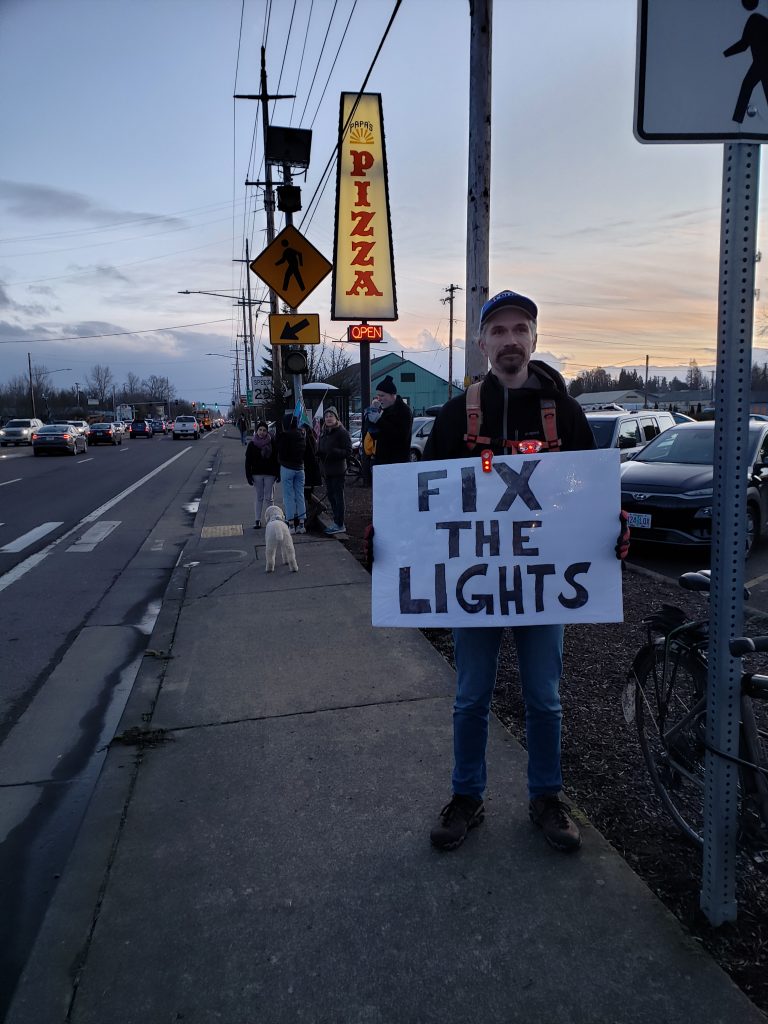
Rhiana Daniel, Jeremy Gruver, and Eric Austin – three names that conjure memories of three distinct lives; While their paths likely never crossed, they are joined in death, having been killed on the same stretch of road. Daniel, age 11, and Gruver and Austin, ages 32, were fatally struck by motorists within the last 18 months on and around a South Corvallis Crosswalk.
Their deaths amplified an alarm that had been ringing well before the fatalities ever occurred. The area near the crosswalk has long been known as a dangerous zone, turned deadly, as loved ones and community members join arms in protest – planning and demanding what many view as overdue action from city and state leaders who share responsibility for the road.
Here’s a look at what happened according to area officials, what should have happened, and what will happen next.
The Crosswalk
“My view is two deaths at one crosswalk is too many. Three deaths in under a 200 ft radius? That tells me that there are some significant deficits with pedestrian-oriented design standards,” remarked Ward 3 City Councilor, Hyatt Lytle.
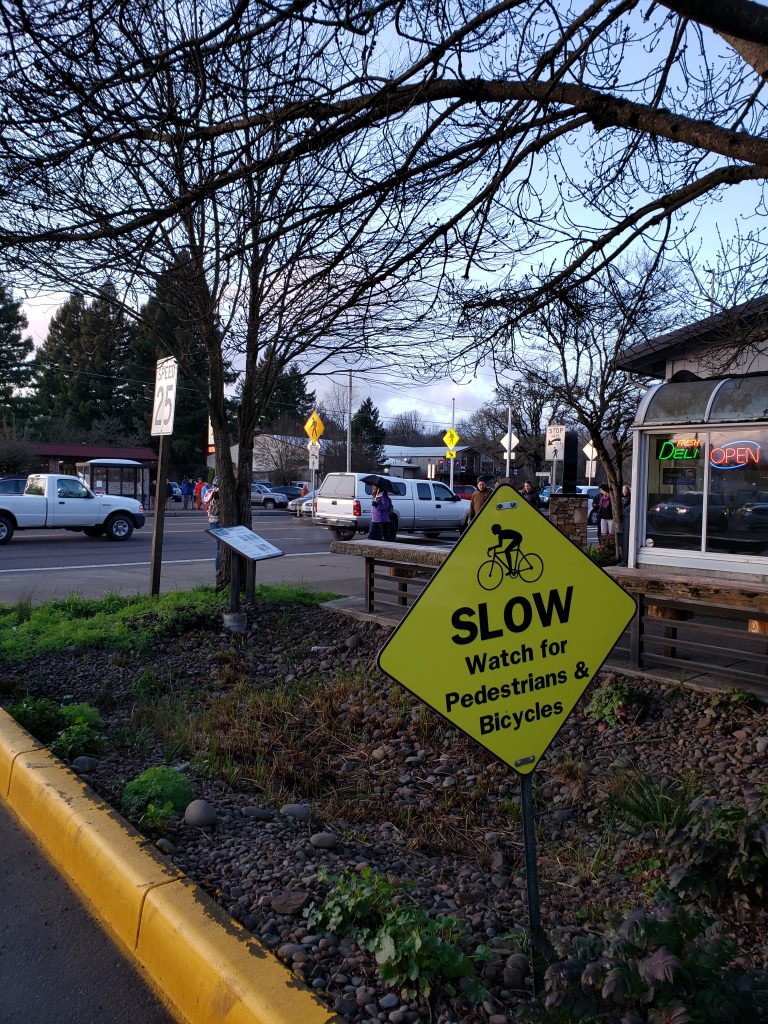 The crosswalk is in the councilor’s ward. There, downtown and outbound traffic merge with overpasses off Highway 99, with Southbound traffic crossing a bridge while merging with highway traffic, before suddenly arriving at the crosswalk, where the speed limit is 25 mph.
The crosswalk is in the councilor’s ward. There, downtown and outbound traffic merge with overpasses off Highway 99, with Southbound traffic crossing a bridge while merging with highway traffic, before suddenly arriving at the crosswalk, where the speed limit is 25 mph.
“There are sidewalks on both sides, against traffic of the North Bound bridge, and the one on the west-side just stops,” said Lytle, “and there is a curb cut for an unmarked crosswalk, and another curb cut on the east-side across the 35 mph overpass ramp, where cars are [usually] accelerating much faster than that. Then you have a multi-use path that dumps everyone off on the corner of Chapman and 99.”
The crosswalk is wedged between buildings and businesses, including the South Corvallis Coop, Papa’s Pizza, the Men’s Winter Shelter, Fireworks Pizza, and the Upper Deck Sports Bar.
Austin was struck while riding his bicycle through the crosswalk in June 2018. Gruver was also riding his bicycle when he was hit between the Coop and the bridge over Mary’s River in October 2019. Daniel was killed while walking through the crosswalk on January 8, 2020.
Cries for Prevention
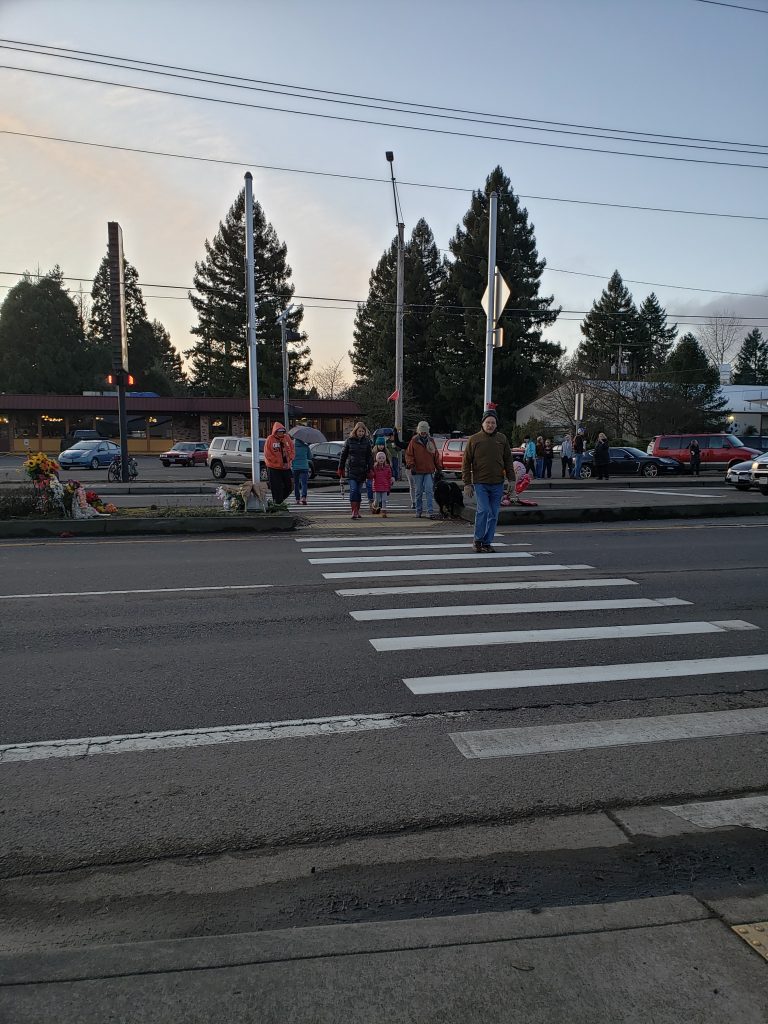 Community members and organizations have been urging city and state leaders to improve the road’s safety standards since Austin’s death.
Community members and organizations have been urging city and state leaders to improve the road’s safety standards since Austin’s death.
An avid book collector and lover of music and writing, Austin was known for his bright and quirky character; he was both our Copy Editor at The Advocate and a city notes taker prior to his death. Gruver was described as a carefree guy who loved camping, fishing, and riding bikes. Daniel was a student at Linus Pauling Middle School. Her death has drawn mourning and support from a staggering amount of community members.
Bruce Austin, Eric’s father, has been a steadfast leader in efforts to improve safety near the crosswalk since his son’s death, and has been frustrated by the slow level of progress made in the area until now.
“I’ve been interviewed for newspaper articles, I’ve spoken to my senator and representative, I’ve spoken at the Oregon Public Health Association conference, I’ve spoken to my mayor, my elected DA, and I’ve spoken to anyone else who wants to listen,” said Austin.
Austin lives in South Corvallis and frequents the crosswalk to monitor for safety. “Since Eric’s death, and up until a burst of enforcement [after Rhiana’s death], I’ve seen exactly one police officer parked in this area with a radar gun.”
Austin also said he’s witnessed and reported city buses and Fire Department pickups for multiple counts of speeding through the area.
“The driver who killed my son was documented by a dash cam in an adjacent car to have been going 33 mph in the 25 zone, on a clear, sunlit summer evening,” he said. “I haven’t heard if excess speed was a factor in Jeremy’s death or [Rhiana’s], but, odds are, it was.”
Studies show a 10 percent fatality rate for pedestrians hit by cars at 20 mph. The rate spikes to 40 percent at 30 mph, and 80 percent at 40 mph. According to a study from July 2018, nearly 91 percent of drivers exceeded the 25 mph speed limit near that specific crosswalk. The study was lead by OSU transportation engineering doctoral student Dylan Horne, and then Corvallis transportation specialist Greg Wilson.
Despite objection and testimony from Austin after his son’s death, the city approved plans for a drive-thru coffee shop to be added near the crosswalk. The city also approved a South Corvallis population expansion – “with no explanation of what preventive measures will be put into place,” said Austin, pointing to risk factors that come with increased population.
In an interview after Gruver’s death and before Daniel’s – while this story was first developing – Austin remarked, “At what point is the city liable for the next accident, or for the next injury or death?” He and many others had repeatedly asked city and state leaders when the crosswalk’s middle lights would be repaired after yet another collision destroyed them in August 2019.
ODOT vs. The City
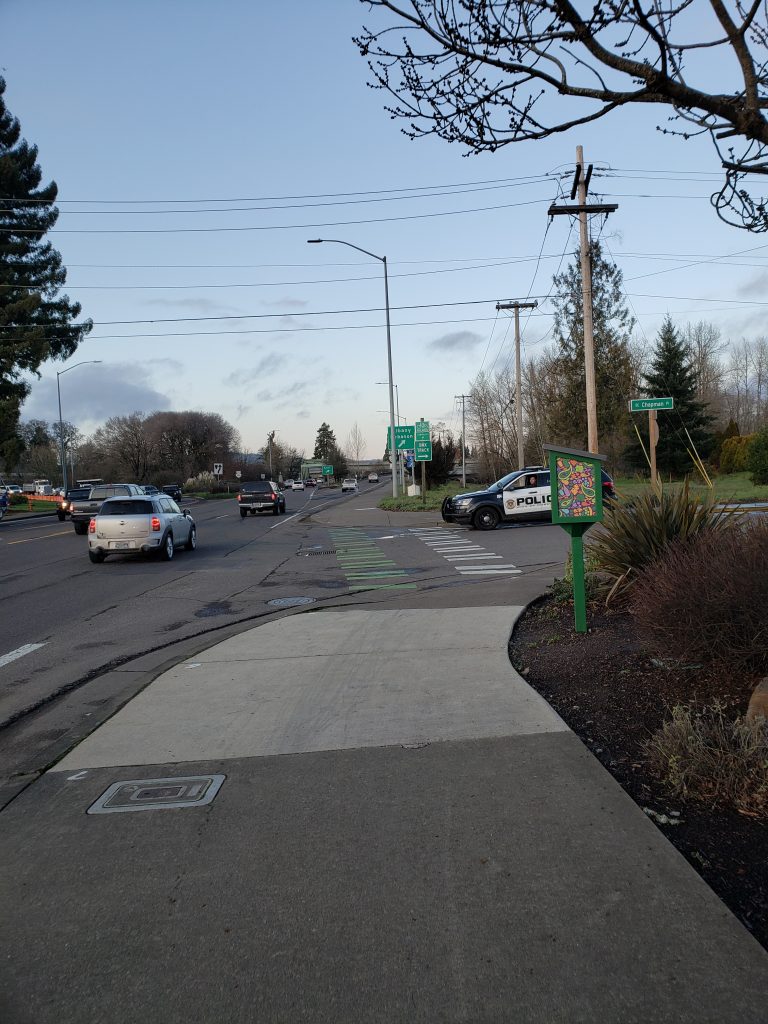 Because the stretch of road merges with Highway 99, infrastructure is governed by the Oregon Department of Transportation, while maintenance is performed by the city of Corvallis.
Because the stretch of road merges with Highway 99, infrastructure is governed by the Oregon Department of Transportation, while maintenance is performed by the city of Corvallis.
Public Works Director for the city of Corvallis, Mary Steckel, said that the city and ODOT “immediately began strategizing ways to increase the safety at the signalized pedestrian crosswalks along Highway 99” after Austin’s death in July 2018. Their plans included upgrading to more visible Rectangular Rapid Flashing Beacons and adding green and white pavement markings to the walkway on the east side of Highway 99, near the Coop.
RRFBs feature white strobes and a distinctive flash pattern similar to other types of emergency lights.
“We found there isn’t one specific solution for the area,” said ODOT public information officer for Region 2, Angela Beers Seydel. “The contributing factors were different for each crash – speed, visibility, awareness.”
“This is a busy area with all modes of travel using the corridor,” she continued, “so changes have to help pedestrians and bicyclists in the area, while still serving vehicular and commercial needs. The north end of this segment has additional factors such as the bypass connections and the undeveloped green areas that can lead drivers unfamiliar with the area to assume the road characteristics are changing (urban to rural for example).”
Beers Seydel said these factors would be considered during a South Corridor Refinement Study, scheduled to start later this year.
She confirmed that the green and white markings were completed in November 2019 as a project co-signed and developed by ODOT and the city, after Gruver was struck and killed.
“Our current safety project – which includes upgrading the flashing lights and upgrading the signs at the four mid-block crossings – has taken just over a year to complete,” she said.
At press time, the RRFBs and signage are currently being installed and are expected to be complete by January 31, weather permitting.
By any measure, five months is a long time to wait to fix the broken lights at the crosswalk’s median, and “immediate” seems suspicious given that the markings were added a month after Gruver’s death – and long after Austin’s.
That said, government is well-known for making slow progress. Director Steckel explained, “Because of the long lead time on specialized equipment purchases, replacement parts for the old style pedestrian signals were not expected to arrive before the RRFB project would get underway. Based on this, the work effort concentrated on securing and installing the RRFB equipment.”
Steckel further elaborated that Oregon’s regulations for government purchasing are meant to ensure dollars are spent wisely. “These regulations call for a formal bid process on large dollar expenditures that takes several months to complete. The timeframe for this project was consistent with other projects that require design and bid processes for specialized equipment.”
As for the lights, Senator Sara Gelser surmised the delay in repairs as “a series of unfortunate circumstances.”
“For some reason, the pole was on back order and not available until later in the fall,” she said. “That specific pole was required in order to accommodate the wiring for the pedestrian lights. ODOT is responsible for the pedestrian light configuration, but they could not put the project out to bid until the pole was installed. That happened in November and the contract went out promptly. The work began in December and is scheduled to be complete later this month.”
Why Not Red Lights Instead?
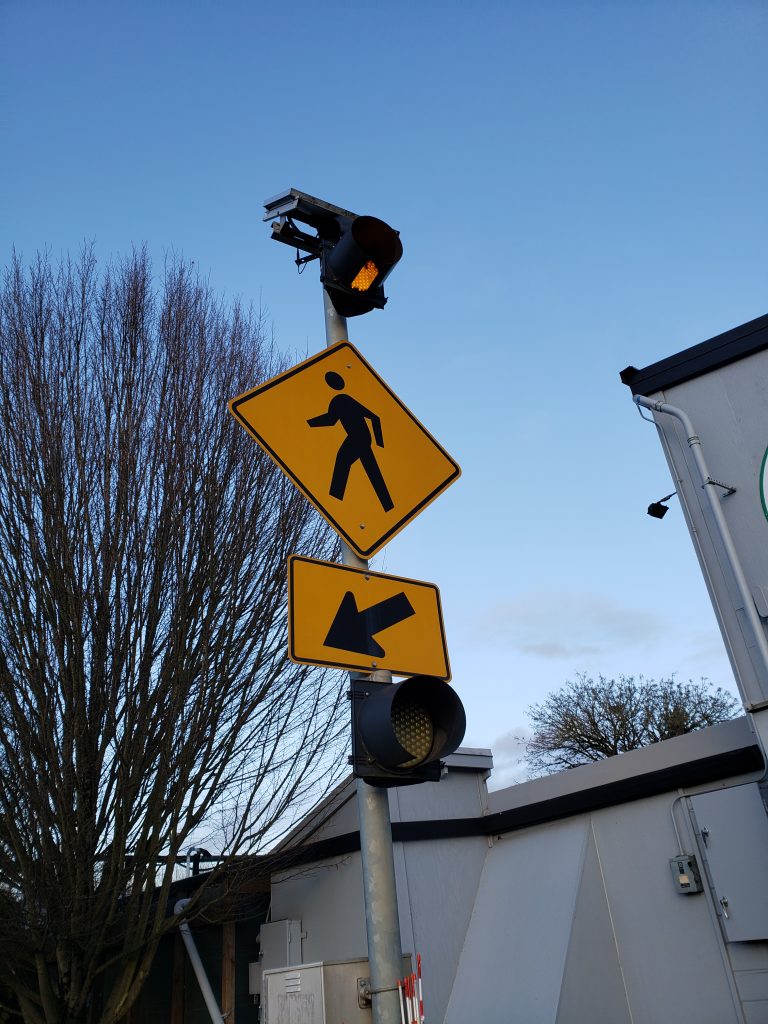 “I can tell you that one of the loudest arguments in South Corvallis from the community is for red lights, as opposed to yellow or even the RRFBs,” commented Councilor Lytle. “Red means stop.”
“I can tell you that one of the loudest arguments in South Corvallis from the community is for red lights, as opposed to yellow or even the RRFBs,” commented Councilor Lytle. “Red means stop.”
Referred to as Pedestrian Hybrid Beacons or HAWKs, the red lights are displayed on both sides of the road and stop traffic completely in both directions. A Federal Highway Administration (FHWA) study conducted at 21 crosswalks saw crashes reduced by 29 percent, and pedestrian crashes reduced by 69 percent, after HAWKs were installed.
Councilor Lytle said she’s been reading ODOT reports on safety effectiveness at pedestrian crossings. “Everything that I have come across has pointed to HAWKs being one of the safest pedestrian crossings, especially on five lane roads (with medians).”
Gelser said that because the section of road is subject to federal highway regulations, red HAWK lights do not meet the criteria to be installed.
Beers Seydel said HAWKs “have different siting criteria, levels of expected crash reduction, and user compliance than pedestrian activated warning lights, like Rectangular Rapid Flashing Beacons.”
Mayor Biff Traber acknowledged data that supports HAWK lights as a safer alternative to RRFBs, and said that he will seek more information from city staff and ODOT. Director Steckel confirmed that HAWK signals will be among ideas evaluated for feasibility and benefit by the city in the near future.
Beers Seydel admitted that HAWKs “have higher compliance rates and slightly better safety performance, but cost significantly more than Rectangular Rapid Flashing Beacons.”
“Given the limited available funding and a desire to address needs at multiple locations along the corridor, installing Rectangular Rapid Flashing Beacons was determined to be the best alternative for the current project. [An] upcoming study will consider installation of Pedestrian Hybrid Beacons,” she said.
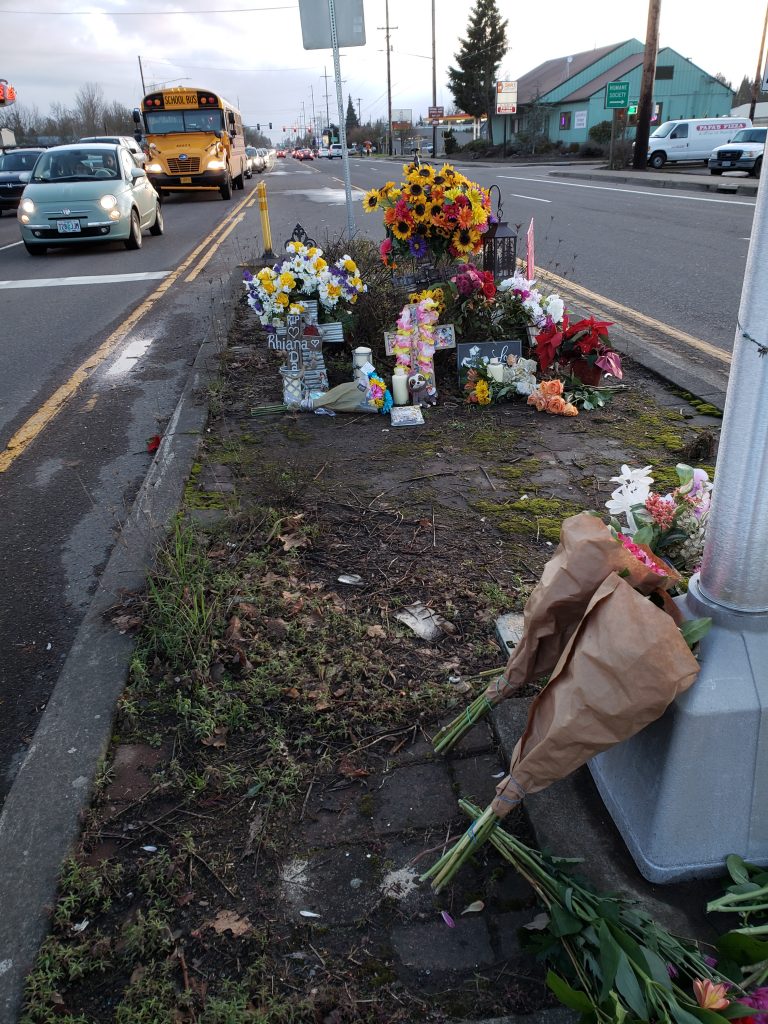
Action in the Aftermath
After Daniel’s death, ODOT and Corvallis installed temporary signs to further raise awareness of the crossings where pedestrians and bicyclists share the road.
According to Director Steckel, the city and ODOT are working together on further safety improvements. At the crosswalk, these include signage, lighting, speed signs, and enforcement.
“ODOT put up temporary advance warning signs, Corvallis Police are doing more frequent patrols in the area, vegetation in the crossing islands [was] removed to improve visibility, and the new RRFB pedestrian signal lights are being installed,” said Steckel.
Beers Seydel said ODOT will also be installing ADA compliant ramps through the area beginning this summer.
Community partnership organization Living Southtown is also working on low cost projects, such as increasing art, shade, and places to sit along Highway 99.
Lytle said she’s been contacting other cities that have problem-solved similar safety issues with ODOT. “So far I have learned about many collaborative efforts, such as quick response teams, street diets, lowering speed limits, and radar sign assistance and placement.” Street diet is a transportation planning term for reducing the number or width of lanes to achieve safety and use goals. The strategy makes room for pedestrian and cyclist upgrades, as narrower lanes tend to slow drivers down.
Lytle stressed that communication and varying levels of information seemed to be a conflict point. “We need to find a way to be on the same page,” she said.
“There is little we can do directly to make the state or ODOT do anything,” said Mayor Traber. “What we need to do is to communicate our increased priority for pedestrian (and bicycle) safety, and then work frequently and urgently with them as they respond. We can also lobby with our legislators and other state connections to get support for improved flexibility and response from ODOT.”
According to Gelser, ODOT has agreed to visit Corvallis for a community meeting after the investigation is complete. “It is my hope that this meeting will include key leaders from ODOT and the city so citizens can learn about the issues related to the repair with all of the responsible parties in the room,” she offered.
Prevention, Please
While these rushes of improvements are sure to prevent many future incidents, there is nothing that can be done to bring back the lives already lost – nor erase the trauma inflected on all parties involved and the community at large. We are left with a lesson on the importance of prevention rather than reaction.
State Representative Dan Rayfield stressed, “We must be focused on pre-emptive and preventative action rather than reactive action, particularly in situations which have the potential to be as dangerous as this one.”
“Merely improving the lights at this crosswalk is insufficient,” Rayfield continued. “[Other] solutions will be identified within the next two weeks, and we will advocate for the most impactful actions.”
Rayfied stressed that the best way to meet local needs in a timely manner is to engage stakeholders, “to establish a unified, well-communicated plan that guarantees everyone is clear on the best plan and timeline of events.”
Gelser remarked, “I also hope that as we embark on this discussion, we can hold all of those who have experienced these tragedies personally in a space of respect and kindness. We must recognize that we are all vulnerable to tragedies like these — whether as drivers or pedestrians.”
“A tragedy like this affects so many lives, including the drivers,” said Austin. “But, regardless of the circumstances, there is no excuse for a driver to enter a crosswalk before determining that there are no vulnerable road users in it. If it’s dark and rainy, even more reason to drive slower, stop, and check the crosswalk before proceeding. In the case of [both deaths], three lanes of traffic had stopped and one vehicle didn’t.”
Do you have a story for The Advocate? Email editor@corvallisadvocate.com


